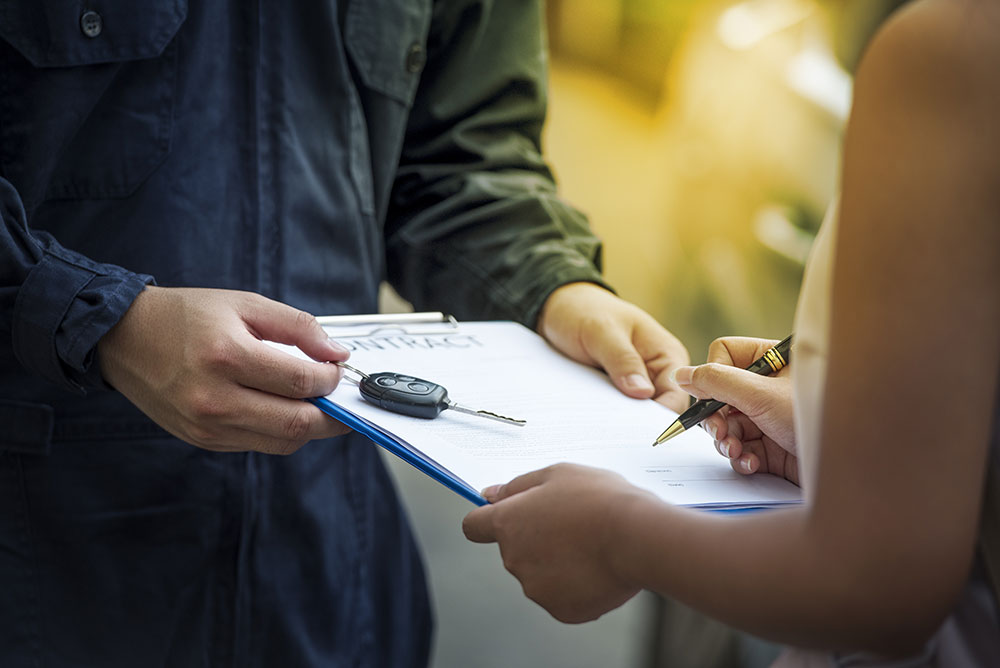
Leasing a Car
Leases are a long-term rental. Learn if leasing is right for you.
Leasing a Car
A vehicle lease is a long-term rental. A lease usually lasts from two to five years. In a lease, you do not own the vehicle. You rent it and can choose to buy it at the end of the lease.
Payments for a lease are usually lower than payments for a purchase. When you lease, you are only paying the vehicle’s depreciation during the lease term, plus rent charges, taxes, and fees.
What charges are included in my lease payments?
At the beginning of the lease, you usually pay the following:
- Your first monthly payment.
- A refundable security deposit.
- Fees for registration.
- Sales tax on the first monthly payment.
With a lease, you don’t pay the sales tax up front. You pay sales tax monthly based on the amount of your payment.
You may also have to pay an acquisition fee to the bank and a down payment called a “cap reduction fee.”
During the lease, you pay your monthly payment, insurance premiums, ongoing maintenance costs and annual vehicle registration fees.
The bank may require higher insurance limits than you normally carry. This extra expense should be considered in figuring the overall cost of leasing.
Read the contract carefully
Before signing the contract, know whether it is a lease or a purchase. A lease contract is titled, “Closed End Lease.” If you buy the vehicle, the contract is titled, “Conditional Sales Contract.”
Be sure that all the promises made by the salesperson are in the contract. If there is anything you do not understand, ask for an explanation. Do not sign anything you do not understand.
Can I end the lease early?
If you end the lease early, you must pay early-termination penalties, which in most cases are very costly.
After the lease ends
When the lease ends, the dealer estimates the vehicle’s value. If the vehicle is worth less than the estimated value, the leasing company takes the loss. You now have the option to buy the vehicle or return it.
I don’t want to buy the vehicle
If you don’t buy the vehicle at the end of the lease, you may have to pay a disposition fee to return the vehicle.
Things to consider before leasing
Leases limit the number of miles you may drive the vehicle, often 12,000 to 15,000 miles per year. If you go over the miles allowed, you will be charged for the extra miles at the end of the lease. Be sure the lease includes the amount of miles you expect to use.
Leases limit the wear on the vehicle. When you return the vehicle, you will be charged for any excessive wear, use, or damage.
Information about leasing is also available online and in car, consumer and financial publications.
County of Los Angeles Department of Consumer and Business Affairs. Last change: Dec. 1, 2013

